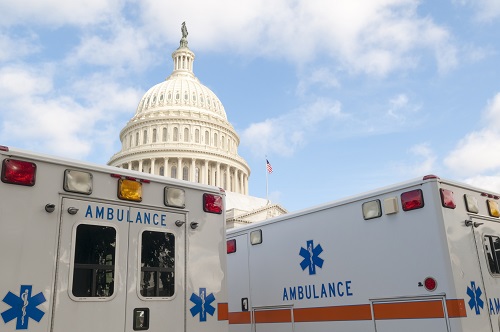I’m glad to see that Nancy Pelosi and Steny Hoyer have an editorial on health care reform in the USA Today. I’m even happier to see them still making the case for a public option. On the other hand, Robert Reich has a thoughtful blogpost up today that examines the deal the administration cut with the pharmaceutical industry. If you want to know what the administration gets out of the deal, this is important:
In return, Big Pharma isn’t just supporting universal health care. It’s also spending a lots of money on TV and radio advertising in support. Sunday’s New York Times reports that Big Pharma has budgeted $150 million for TV ads promoting universal health insurance, starting this August (that’s more money than John McCain spent on TV advertising in last year’s presidential campaign), after having already spent a bundle through advocacy groups like Healthy Economies Now and Families USA.
That is a ginormous media buy. And it’s a buy that supports the passage of health care reform. It’s hard to estimate how much such a deal will help, but that $150 million could just as easily go to opposing reform (a net change of $300 million in advocacy spending). Yet, Reich raises concerns:
It’s bad enough when industry lobbyists extract concessions from members of Congress, which happens all the time. But when an industry gets secret concessions out of the White House in return for a promise to lend the industry’s support to a key piece of legislation, we’re in big trouble. That’s called extortion: An industry is using its capacity to threaten or prevent legislation as a means of altering that legislation for its own benefit. And it’s doing so at the highest reaches of our government, in the office of the President.
Of course, if this were a pure form of extortion, the drug industry wouldn’t be offering to affirmatively support reform, they’d just be offering not to break reform’s legs. This deal has mutual benefits. The larger question is whether the deal with the drug industry precludes the kind of cost savings we need in the bill. Reich recognizes the complexity of the issue:
I don’t want to be puritanical about all this. Politics is a rough game in which means and ends often get mixed and melded. Perhaps the White House deal with Big Pharma is a necessary step to get anything resembling universal health insurance. But if that’s the case, our democracy is in terrible shape. How soon until big industries and their Washington lobbyists have become so politically powerful that secret White House-industry deals like this are prerequisites to any important legislation?
I think that anyone who is looking around can tell you that our democracy is in terrible shape. But it will be in worse shape if we fail to pass health care reform this year.
In other news, the Congressional Budget Office continues to offer analysis that is unhelpful to the cause of health care reform. In this case, they refuse to acknowledge the potential of preventive care to reduce costs, and actually argue the opposite…that preventive care will increase costs. I know that there has been a debate about mammograms, for one example, where a lot of unnecessary treatment and surgery has resulted from increased access to cancer screening. On the other hand, getting people to eat better, quit smoking and exercise are more unambiguous cost savings measures. The key is to spend money wisely on preventive care. The CBO’s analysis seems one-sided.
Senate Majority Whip Dick Durbin says that he’s “open” to passing a bill without a public option, even though he personally supports one. He seems to be saying that they can fix things in Conference and he wants the Senate to pass something so they can get to Conference. Probably, too much will be made of Durbin’s comments. I don’t think they mean much.
What still means a lot is the Connecticut Compromise which resulted in each state getting two senators.
In the House, the big coal state of Wyoming has a single vote to New York’s 29 and California’s 53. In the Senate, each state has two. The two Dakotas (total population: 1.4 million) together have twice as much say in the Senate as does Florida (18.3 million) or Texas (24.3 million) or Illinois (12.9 million)…
…Virginia, the biggest of the original 13 states, had 538,000 people in 1780, or 12 times as many people as the smallest state, Delaware.
Today, California is 70 times as large as the smallest state, Wyoming, whose population of 533,000 is smaller than that of the average congressional district, and, yes, smaller than that of Washington D.C., which has zero votes in Congress to Wyoming’s three.
This is a bigger obstacle to progressive change than corporate lobbyists.
Update [2009-8-10 9:40:42 by BooMan]: The White House has a new Health Care Reality Check site.




